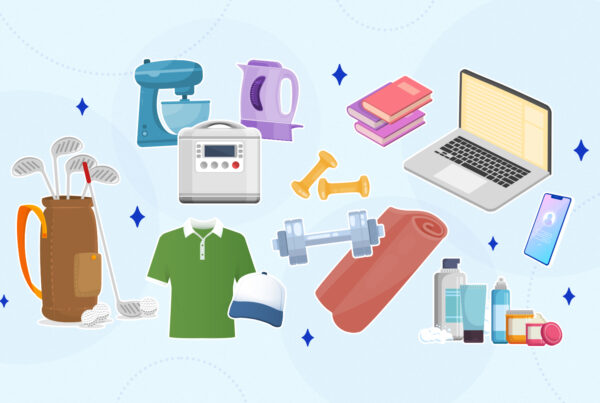As businesses everywhere transition to cloud-based software as a service (SaaS) model, many companies quickly realize that choosing which SaaS employees to hire can make or break a business. And retaining the right SaaS employees is critical to any successful organization’s overall business strategy.
But what might surprise you is that an employee’s future with your company is decided in the early days and weeks of a new job. Research shows that successful onboarding makes new employees feel welcomed and prepared for success.
Let’s delve deeper to learn how to provide the best onboarding experience for new SaaS employees and why it matters.
Why Some New SaaS Employees Don’t Last Through Onboarding
Starting a new job can be an intimidating process. There’s a lot to learn, it can be overwhelming, and it often involves navigating complicated systems and processes.
Despite the best efforts of employers, some new SaaS employees may choose to quit during onboarding.
Courtney Palmer, the Managing Director of Corporate Talent Strategy at Insight Global, advises companies should aim to overcommunicate during those early days and weeks.
“…it can be an unsettling time for a new employee who is already taking a leap of faith. Employees are evaluating you, your shared values, and the company culture. We need to be proactively giving information and reassurance.”, she says.
If not, these uncertainties can lead to higher attrition rates.
According to research by the Society for Human Resources Management (SHRM), new hires decide how long they will stay with a company in the first six months of employment. A different survey reveals 20% of new hires resign within the first 45 days.
Meanwhile, new SaaS employees who underwent a structured onboarding process are more than twice as likely (58%) to remain with the same company three years later.
Your onboarding experience is critical for much more than ensuring your new SaaS employee knows how to do their job and where to find the bathroom. It’s both a short-term and long-term investment in their success—and your company’s future.
“The first 30 days are crucial,” explains Palmer. New SaaS employees make decisions about their trajectory with a company quickly that it can make or break long-term employee engagement.
What You Can Do to Improve Your Company’s Onboarding Experience
Onboarding a new SaaS employee is one of the most important stages in creating a successful business. It sets the tone for all future interactions and can determine whether an employee feels welcomed, supported, and motivated as they start their SaaS career with your company.
However, according to recent Gallup polls, only 12% of employees had a positive onboarding experience, and only 29% felt prepared and supported in their new role. Companies suffer when turnover rates are high, both financially and in terms of team productivity, but this is exacerbated when someone leaves within the first few months.
Improving your company’s onboarding experience benefits both employees and employers. Recent studies reveal that a positive onboarding experience can boost employee retention by 50%.
Unfortunately, common challenges in the onboarding process can slow down this process and even create conflicts with existing team members. The following are the most common challenges and how to solve them.
1. Give More Transparency
Transparency during the recruiting and hiring process will help streamline the transition into a successful pre-boarding phase, laying the groundwork for a smooth and efficient onboarding and transition.
More than 75% of SaaS employees want more transparency, and 30% have quit a job due to a lack of transparency. Increased transparency leads to increased employee satisfaction. Most SaaS employees with transparent employers reported being satisfied with their SaaS jobs.
2. Always Plan Ahead
You shouldn’t wait until an employee’s first day to think about training and acclimating them to their environment. Map out what their first week and first thirty days will look like before their first day, whether it’s a formalized process or something you’ve put together on your own as their manager.
“People are eager to get up and running quickly and to be productive…Don’t rush someone in the door to be productive.” Palmer admits that a lack of planning sets new hires up for failure.
Onboarding SaaS employees don’t go well when you rush them into starting work without giving them time to adjust and become acquainted with the environment.
Palmer also claims that switching from randomized to strategic start dates helped resolve some of her company’s planning issues.
“It looked like we weren’t prioritizing our new hires,” she explains. When start dates were random, the company struggled to ensure that people had their workspaces set up as well as the necessary equipment and program access.
In addition, you should encourage SaaS employees to spend meetings learning rather than producing. It would be great if they catch on quickly and naturally but don’t rush the process. Allow new SaaS employees time to learn about the team, the business, and the strategies.
3. Encourage a Sense of Belonging
Creating a sense of belonging is an essential aspect of onboarding that is often overlooked. High belonging has been linked to a 56% increase in job performance, a 50% reduction in turnover risks, and even a significant reduction in the use of sick days.
These improvements in employee productivity, engagement, and attendance can result in millions of dollars in cost savings and increased revenue.
“It’s important for new hires to see that there’s a place for them and that they belong,” Palmer says.
She emphasizes the importance of simple things like spelling names correctly, having a desk prepped and equipment set up and creating a welcoming environment to help new SaaS employees feel safe and wanted.
4. Set Aside Time to Communicate
Palmer recommends setting aside a day for one-on-one conversations with new SaaS employees.
Make it clear to new hires that you are invested in their success at the company, demonstrate how thrilled you are to have them, maintain vigilance over their ongoing development, and establish clear guidelines for both parties.
5. Encourage More Engagement During Onboarding
New SaaS employees benefit from being active participants in their own onboarding. During the interview process, you should encourage potential hires to ask questions.
Encourage them to ask about the work culture, a day in the life at the company, the current state of the team and the company, growth potential, current technologies, processes in place, or anything else on their mind. Then be honest when you answer their questions.
Remember, employees want transparency and will likely quit if they feel a lack of it. Be transparent during SaaS employee onboarding and training experiences and offer them feedback for improvements.
Final Thoughts
Onboarding new SaaS employees is an important process that you should not take lightly. Consider implementing some (or all) of the tips mentioned above to make the onboarding process as smooth as possible for your new team members.
Want to take your SaaS business to the next level? Jarvis can help!
Jarvis are global leaders in SaaS jobs recruiting and SaaS recruitment services. We have successfully sourced and recruited expert SaaS professionals for businesses of all sizes, ranging from startups to big corporations. We help you find the right candidate for the job.
Reach out to us today, and let’s work together to make your company the success it should be.
Stay updated with the latest business trends and insights by following us on LinkedIn.




